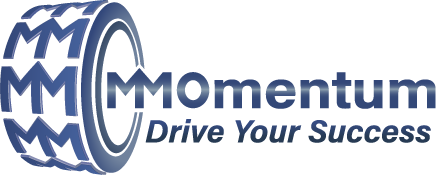Introduction
My STEM background and frustrations dealing with consultants at various stages of my career drove me to implement metrics as an integral part of my coaching practice to measure the effectiveness of my engagements. As a leader, you understand the importance of measurable results. Every initiative, whether it’s launching a new product, entering a new market, or investing in employee development, is assessed for its return on investment (RoI). When it comes to professional coaching, this principle should be no different. The value of coaching must be evident, not just in subjective improvements, but in tangible, measurable outcomes that align with your business objectives. The professional coaching world utilizes various metrics, but the one that best captures the value of my services is called Return on Coaching Investment (RoCI).
Defining Return on Coaching Investment (RoCI)
RoCI is designed to quantify the tangible and intangible benefits derived from professional coaching. Beyond financial benefits, RoCI is a holistic measure that also includes increased productivity, improved leadership skills, enhanced team performance, and positive shifts in organizational culture, to name a few. As each engagement is unique, the RoCI will include any number of factors, such as:
- Quantitative Measures
- Financial Performance: Changes in revenue, profit margins, or cost savings attributable to coaching.
- Objective changes in results from validated assessments.
- Productivity: Improvements in efficiency and effectiveness.
- Achievement of Business Goals: Contributions from coaching toward specific business objectives.
- Qualitative Measures:
- Leadership Development: Enhancements in leadership skills, decision-making, and strategic thinking.
- Employee Engagement: Increased engagement, motivation, and satisfaction among team members.
- Organizational Culture: Positive shifts in corporate culture and team dynamics. Some aspects can be quantitatively measured, such as employee turnover.
- Changes in Personality, Behavior, Skills, and Cognitive Abilities:
- Emotional Intelligence and Communication Skills: Level of self-awareness of your engagement style and measure of improved interactions.
- Conflict Resolution: Ability to manage and resolve conflicts.
- Innovation and Problem-Solving: Increases in creativity and effectiveness in addressing challenges.
- Focus and Control: Improvements in your ability to focus and feeling more in control.
- Feedback and Perceptions:
- Stakeholder Feedback: Input from peers, subordinates, and supervisors about your progress and impact.
- Self-Assessment: Your own evaluation of growth and development before and after our engagement.
The Dynamic Nature of Coaching Goals
An important aspect of executive coaching is recognizing that goals are not static. During the contracting phase and even within individual sessions, initial goals may evolve or change completely. Often, clients come into coaching with a surface-level understanding of their challenges and aspirations. Through active inquiry and self-discovery, deeper insights and more meaningful goals can often emerge. This fluidity is a natural part of the coaching journey and is essential for achieving impactful and meaningful results.
For instance, a client might initially seek coaching to improve time management skills, believing acquiring this skill is the key to becoming a more effective leader. However, as the coaching relationship deepens, it may become evident that underlying issues such as delegation, prioritization, or even personal well-being are the actual root causes. Adjusting goals to address these deeper insights ensures that the coaching engagement continues to address the client’s needs.
Implementing RoCI in Coaching Engagements
To effectively measure RoCI, it’s crucial to establish clear, agreed-upon metrics throughout the coaching relationship. This involves setting specific, measurable, achievable, relevant, and time-bound (SMART) goals not just at the beginning of our engagement but for each session together. Another method is to measure changes in personality, behavior, skills, and cognitive abilities using validated assessments at the beginning of an engagement and after three to six months (read Establish a Baseline and Track Your Progress with Validated Assessments for more information. As coaching progresses, these regular check-ins and reassessments help ensure that the goals remain aligned with the client’s evolving needs and the organization’s objectives.
1. Setting Initial Metrics: During the contracting phase of our engagement, we will work together to define what success looks like. This might include performance indicators related to business outcomes, qualitative measures such as improved team morale, or enhanced decision-making capabilities. We will also review assessments to establish a baseline.
2. Ongoing Evaluation: Throughout the coaching engagement, we continuously evaluate progress against these metrics. This involves gathering feedback, observing behavioral changes, and assessing business results.
3. Adjusting Goals: As new insights are uncovered, we may need to adjust goals. This flexibility ensures that the coaching remains relevant and continues to drive meaningful outcomes.
Conclusion
In today’s business environment, where accountability and measurable results are paramount, RoCI provides a solid framework for evaluating the effectiveness of our coaching engagement. By focusing on both quantitative and qualitative outcomes, RoCI captures the full value of coaching, ensuring that it delivers not just personal growth but tangible benefits for you and the organization.
